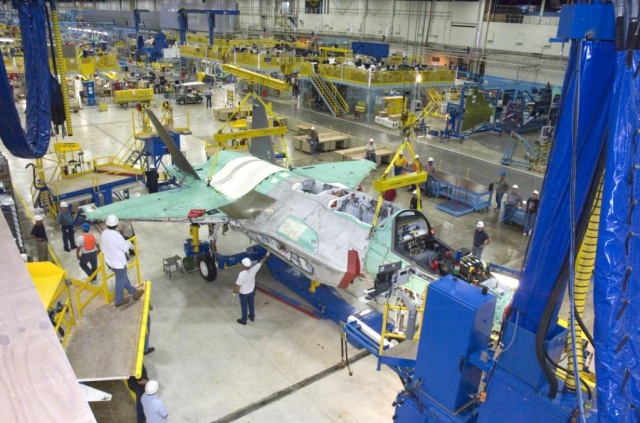
The government’s new
Defence export strategy offers little in terms of exploring the ‘market failure’ arguments for government intervention. Nor does it discuss why additional assistance is needed when there’s already considerable industry interest in defence exporting, or detail where the export opportunities of the future might lie. And, even leaving those points aside, there remain two fronts on which the document falls short of expectation.
The first is that the strategy’s estimates of current defence export activity seem
unusually high, adding to an already substantial list of
puzzling data on defence industry jobs and growth. The document claims that, in the last full financial year, Australian defence exports were somewhere between $1.5 billion and $2.5 billion.
Those figures appear optimistic for a number of reasons. To start, the exact origin of the figures is difficult to determine. Also, the strategy lacks corroborating evidence identifying the largest contributing companies and/or projects (even in an aggregate form to guard against the disclosure of confidential information). And the project at the
vanguard of Australia’s recent export success—JSF global supply chain participation—accounts for only
around 5% of the $2.5 billion figure. Further, the estimates seem to hinge on
company predictions (possibly for export projects spanning many years) rather than actual, annual export outcomes. Finally,
SIPRI data for Australia, based on
actual rather than predicted values for major defence projects, show a great deal of volatility, with 2016 representing a peak that far exceeds anything achieved over the preceding five years.
Defence’s own
budget data for 2016–17 indicates that exports of $2.5 billion would approximate the total value of the capital equipment the industry built for our own defence force ($2.4 billion) and equate to 40% of the overall value of capital equipment builds and related sustainment services ($6.3 billion). Not even industry advocates normally
claim that. The department’s only industry survey designed specifically to capture export activity—summarised
here (PDF)—and more recent
Austrade data indicate that exports may equate to no more than 10% of what the industry as a whole produced—or roughly one-third of what the strategy implies.
All that raises the possibility that the strategy’s figures lack a reasonable degree of reliability, are atypical of recent trends or are dominated by dual-use exports (essentially commercial products with some potential defence application)—which isn’t what the document indicates.
The second major shortcoming is that the strategy doesn’t delve into a number of practical issues associated with the government’s broader military-strategic and economic agenda that include the aim of reducing the cost to Australia of acquiring and sustaining weaponry and other defence capital equipment.
To begin, certainty of supply to Defence by Australian-based companies is a critical attribute of the sovereign industrial capabilities identified in the strategy as essential to national security. But history suggests that defence exporting of most kinds is subject to high degrees of
uncertainty.
The strategy is underpinned by an implicit but largely untested assumption, namely that export orders arrive at the right time, in the right quantities, at the right levels of technical sophistication, on the right commercial terms and even from the right countries to bridge shortfalls (or ‘valleys of death’) in domestic demand. But overseas customers order defence capital equipment and related services from Australia according to their needs, not ours.
The strategy also implicitly assumes that the economic benefits of exporting flow through from export-oriented companies to Defence. But that rests on the notion that Australia-based exporters lack the ability to price discriminate between their Australian and overseas customers. Australian defence industry is dominated by large, foreign-owned multinational companies, supported by a significant second tier of specialised small to medium-sized enterprises. Most of these companies have considerable commercial acumen and a degree of domestic market power, meaning that automatic flow-through is by no means a fait accompli. Defence faces formidable obstacles to
price regulating the industry, which only adds to the need for caution.
Also implicit in the strategy is an assumption that exporting benefits the broader Australian economy. It’s true that defence exports can create highly skilled and well-paid jobs. And exports enjoy an important economic advantage over defence products destined for domestic consumption: they’re paid for by overseas governments. Nonetheless, there are potential disadvantages to consider.
Due to the industry’s high level of foreign ownership, much of the profit earned on Australian defence exports could flow back to overseas parent companies, and a good deal of Australia’s costs for the
intellectual property driving export activity may go the same way. Exporting is unlikely to generate the
knowledge spillovers suggested by first impressions. And Australia’s comparative advantage often lies more with capital-intensive defence exports (like Nulka) than labour-intensive projects like naval shipbuilding, which has been noted for its
export potential. Finally, Defence’s own
commissioned research reveals that military exports can adversely affect other areas of the Australian economy by pushing up the exchange rate and drawing labour from other industries rather than from the ranks of the long-term unemployed.
 Print This Post
Print This Post